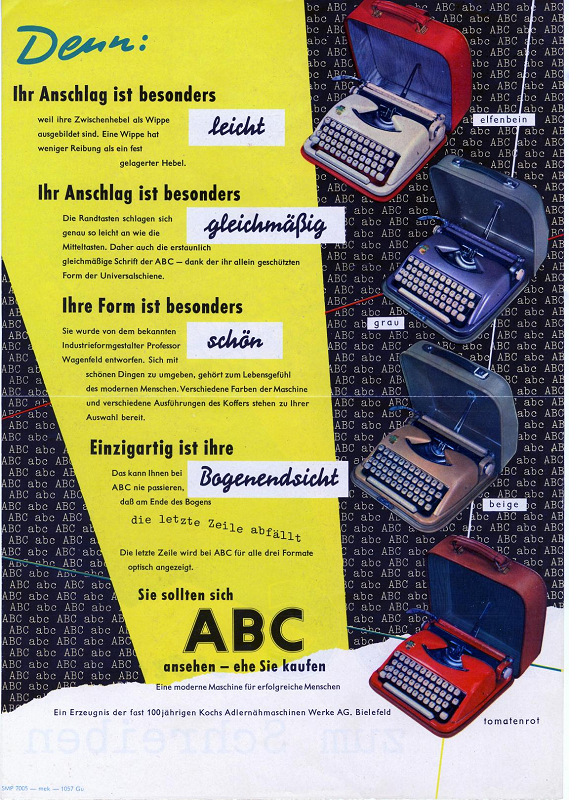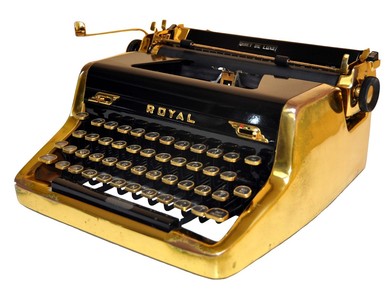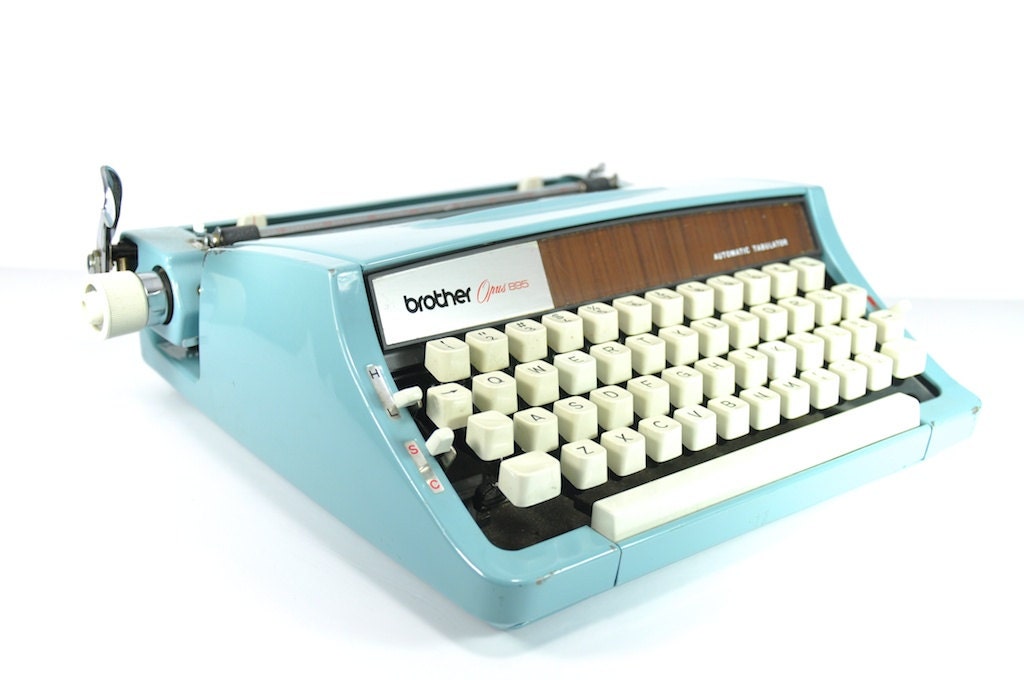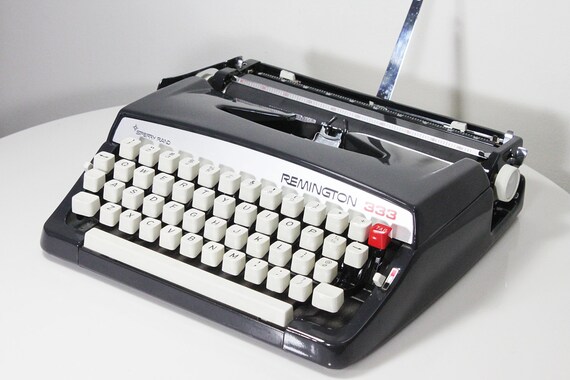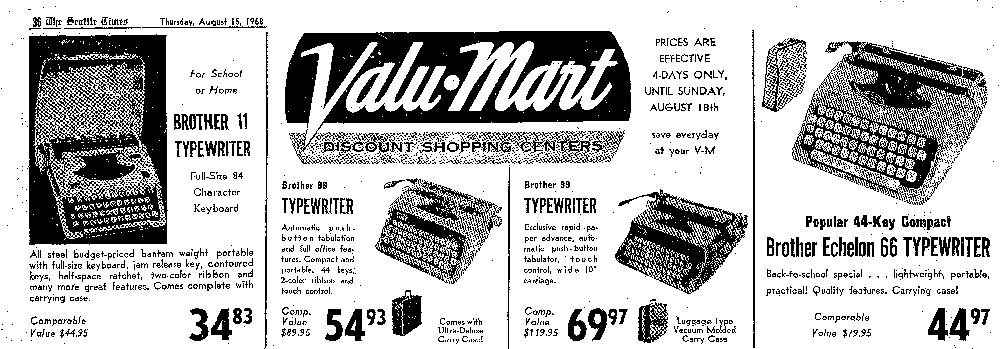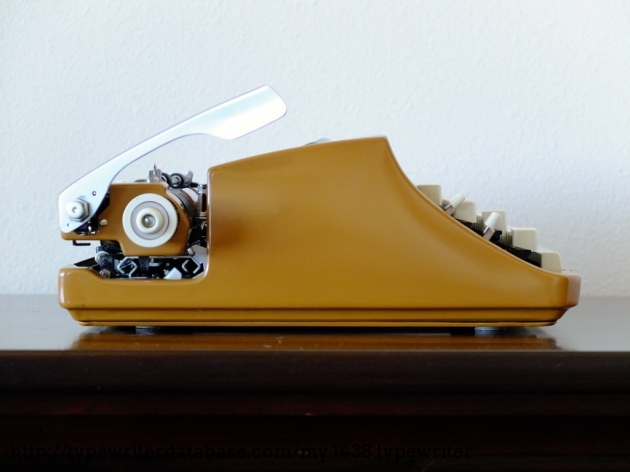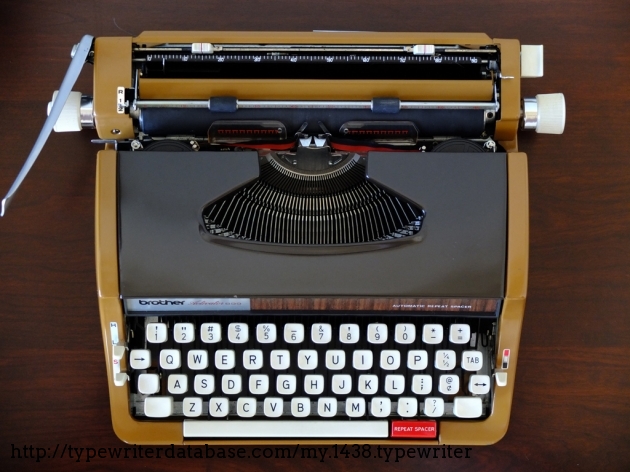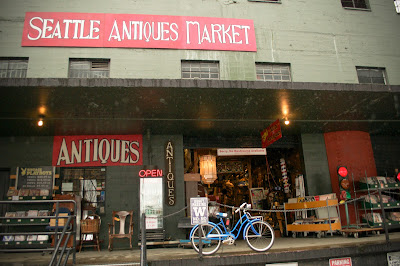If I had to pick a favorite typewriter, there is a good chance that it would be this one:
This typewriter was manufactured in 1959. It is one of the last American-made Smith-Corona Skyriters; later ones were made in Great Britain.
Notice that this typewriter has the longer carriage-return lever. This can be found on the Corsair series as well.
Like most Skyriters, a large amount of paint had rubbed off of the space bar. I repainted the space bar in a color that perfectly matches the case of this typewriter.
This typewriter even had the original manual! And the brush!
This typewriter was manufactured in 1959. It is one of the last American-made Smith-Corona Skyriters; later ones were made in Great Britain.
Notice that this typewriter has the longer carriage-return lever. This can be found on the Corsair series as well.
Like most Skyriters, a large amount of paint had rubbed off of the space bar. I repainted the space bar in a color that perfectly matches the case of this typewriter.
This typewriter even had the original manual! And the brush!
There were ten Smith-Corona dealers in Seattle in 1961
- Burt Typewriter, 1204 Second Avenue, Seattle
- Clark Stationery Company, 12750 Bothell Way (now Lake City Way), Seattle
- Foster Office Equipment, 457 SW 153rd, Burien
- Gene Brown Typewriter, 5511 24th Avenue NW, Seattle
- Lowman & Hanford, 1515 Second Avenue, Seattle
- MacDougall & Southwick, Second and Pike (Now a parking lot behind City Target), Seattle
- Record Stationery and Office Supply, 801 Walla Walla Avenue, Seattle
- Tom's Typewriter and Hobby Shop, 3402 Claremont Avenue South, Seattle
- University Book Store, 4326 University Way NE, Seattle
- Washington Book Store, 4316 University Way NE, Seattle (Now part of the University Book Store






